Rio de Janeiro is often synonymous of hot days and lots of sunshine. Therefore, during your visit to the city, you will probably be very thirsty, and you will need to hydrate. To let you know what to drink in Rio de Janeiro, we made a list of 7 drinks that need to be on your itinerary, including the best tips on where to try them.
Like the 7 foods you should try, these drinks are not necessarily from Rio. But they are part of the culture and lifestyle of everyone who lives in Rio. Our suggestion, therefore, is that you try them all! Each at a different time of your trip.
Find out which ones are they to follow:
1. Cachaça and Caipirinha
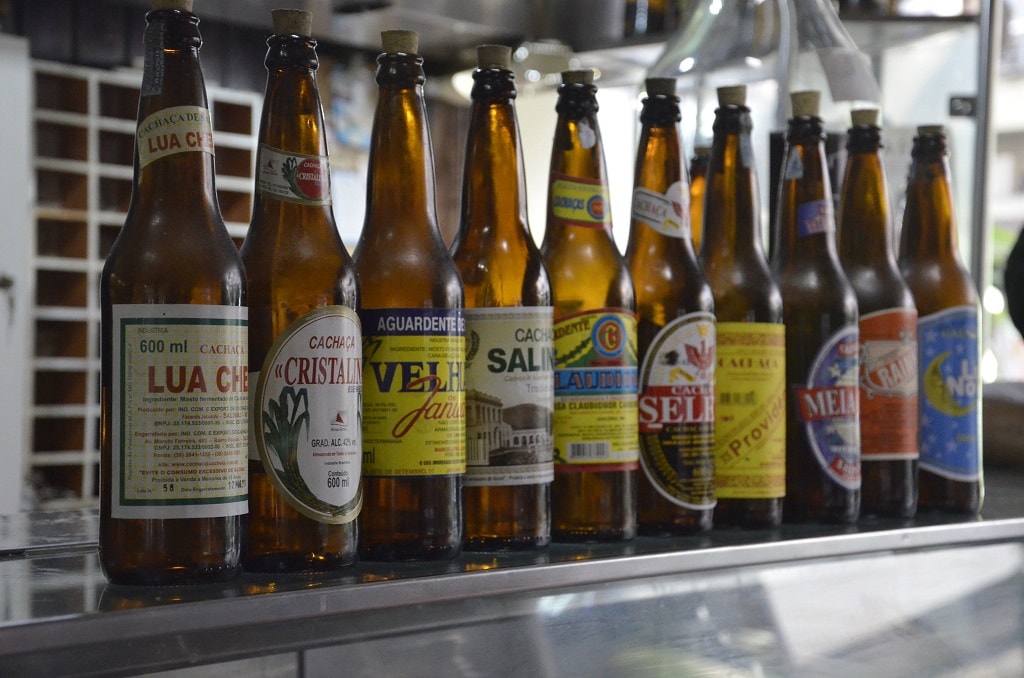
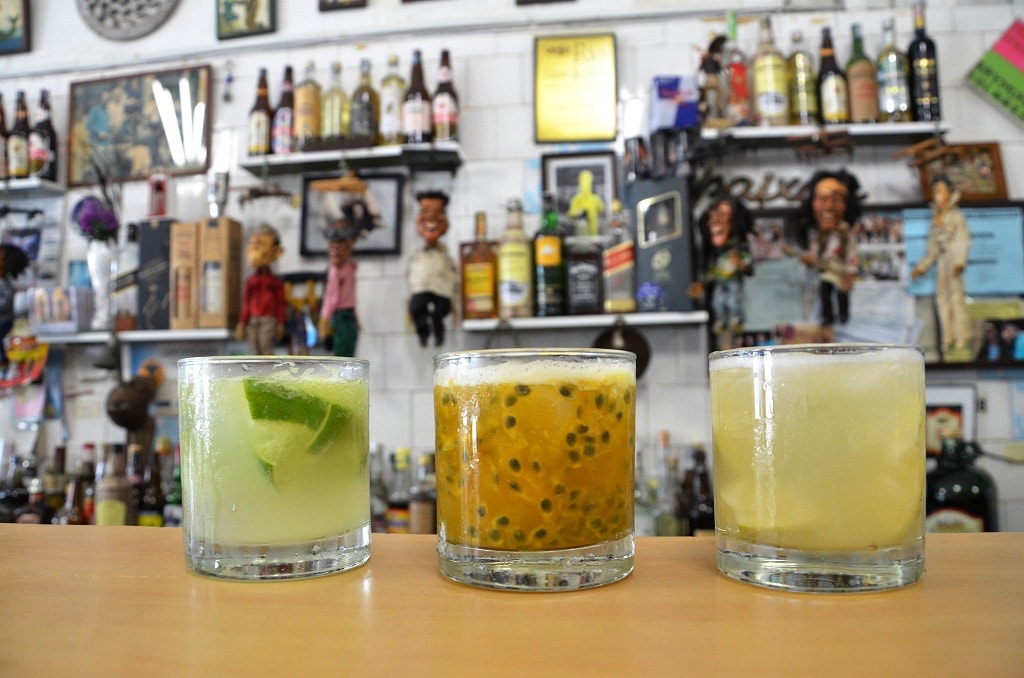
Cachaça is the name given to the sugarcane brandy produced in Brazil. It is, consequently, a genuinely Brazilian drink! Its origin dates back to the seventeenth century, the beginning of Portuguese colonization in our territory. Because it was at this time that sugarcane plantation was adopted as the main commercial activity.
Since then, cachaça has become a beverage of great cultural, social, and economic importance for Brazil. To get an idea, currently, the country produces on average 1.3 billion liters per year of this brandy. And cachaça is still the second most-consumed drink in the country, besides being the most distilled in the world! Yes, Brazilians drink a lot of cachaça, and that includes Cariocas!
In part, this is because cachaça is also the primary raw material for the best-known Brazilian drink in the world: caipirinha. Made with cachaça, lemon and sugar, caipirinha became the quintessential Brazilian spirit and the most consumed by Cariocas and tourists. And no wonder it is one of the 10 must-see attractions in the city.
Cachaça and caipirinha are, therefore, drinks that you can not miss during your visit to Rio de Janeiro. But beware! There are several types of cachaça produced throughout Brazil, with various flavors and, mainly, completely different qualities. A quality cachaça has sweetened perfumes that can refer to wood, vegetables, and fruits. The taste is velvety, slightly sweet, warms the throat and chest area after ingestion and, therefore, should be enjoyed with small sips.
Where to drink?
Cachaças and caipirinhas are sold in almost all bars, restaurants and kiosks in the city. But to make sure your experience is pleasant, inquire about the brand of cachaça provided. Among the most common and best quality are: Ipioca, Seleta, Salinas, Germania, Boazinha, Sagatiba, Leblon. Preferably avoid the brands: Velho Barreiro, 51 and Caninha da Roça.
→ Enjoy your tour to Lapa to visit Casa da Cachaça da Lapa. Learn more at this link here.
2. Guaraná Soda
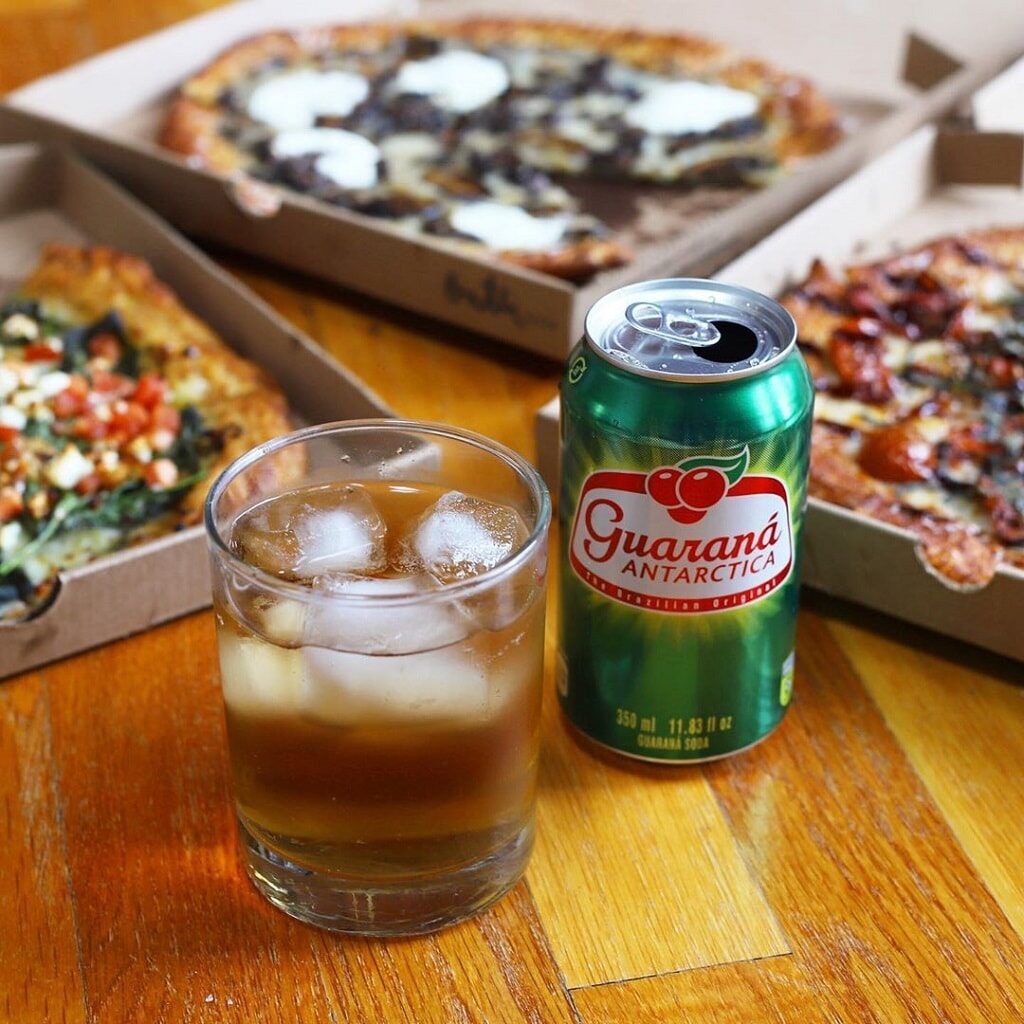
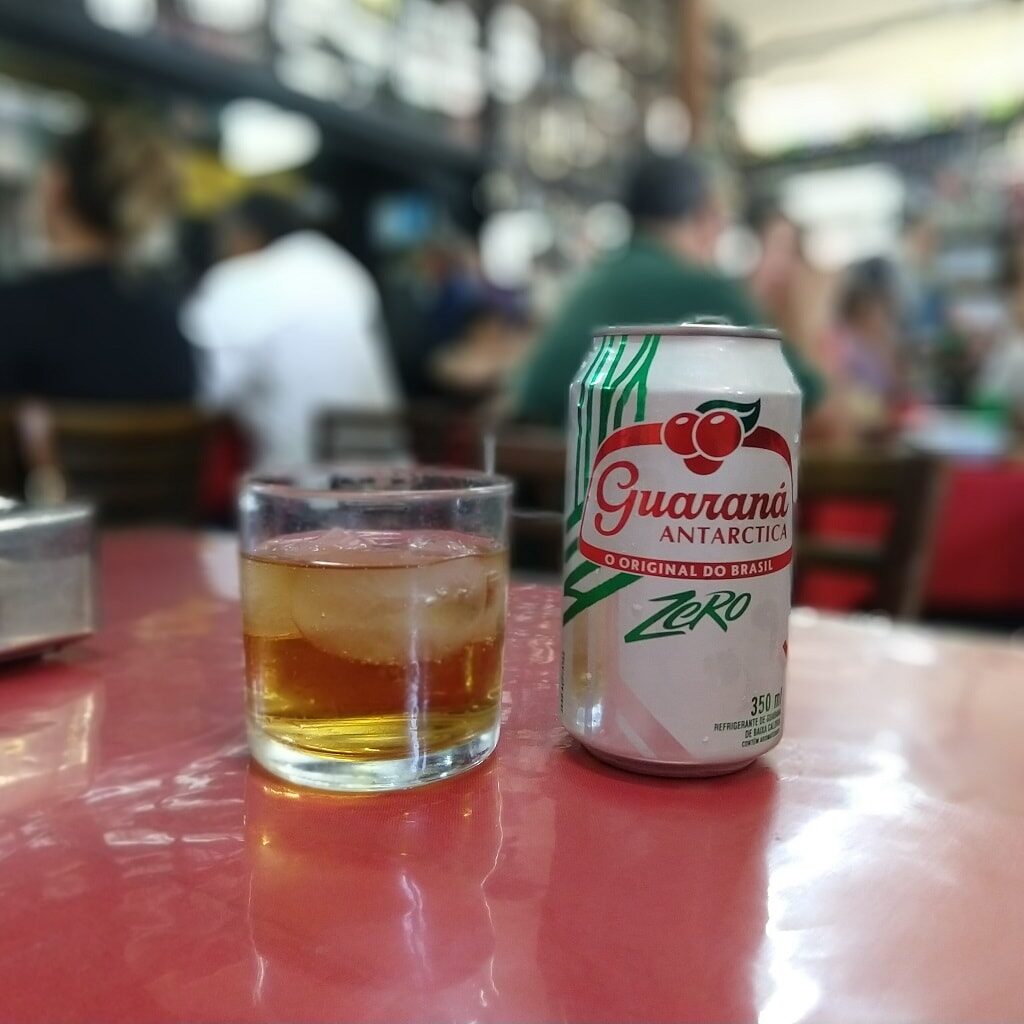
Guaraná is a liana originating from the Amazon, found in Brazil, Peru, Colombia, and Venezuela. Its small red and bitter fruit is rich in caffeine and other substances that have stimulating properties. For this reason, the fruit became widely used in the manufacture of syrups, bars, powders, and soft drinks.
In Brazil, the process of industrializing the fruit syrup began in 1905. However, the success came only in 1921, when Antarctica developed the process of eliminating astringency and bitterness from the fruit, highlighting only its bouquet and giving rise to Guarana Champagne Antarctica – a sweet caramel-colored drink.
To this day, Guarana soda is widely consumed by Brazilians and Cariocas. Even among soft drinks, it is the second most-consumed in the country (behind only coca sodas).
Where to drink?
Guaraná soda can be found at any Rio de Janeiro bar, kiosk or restaurant. Give preference to the Antarctica brand. Coke’s version of the drink is called Fanta Guaraná, and although it’s not bad, it’s not so good.

Carioca Tip:
For those who are not used to sweet flavors may prefer the sugar-free version of the drink: Guaraná Zero.
3. Açaí
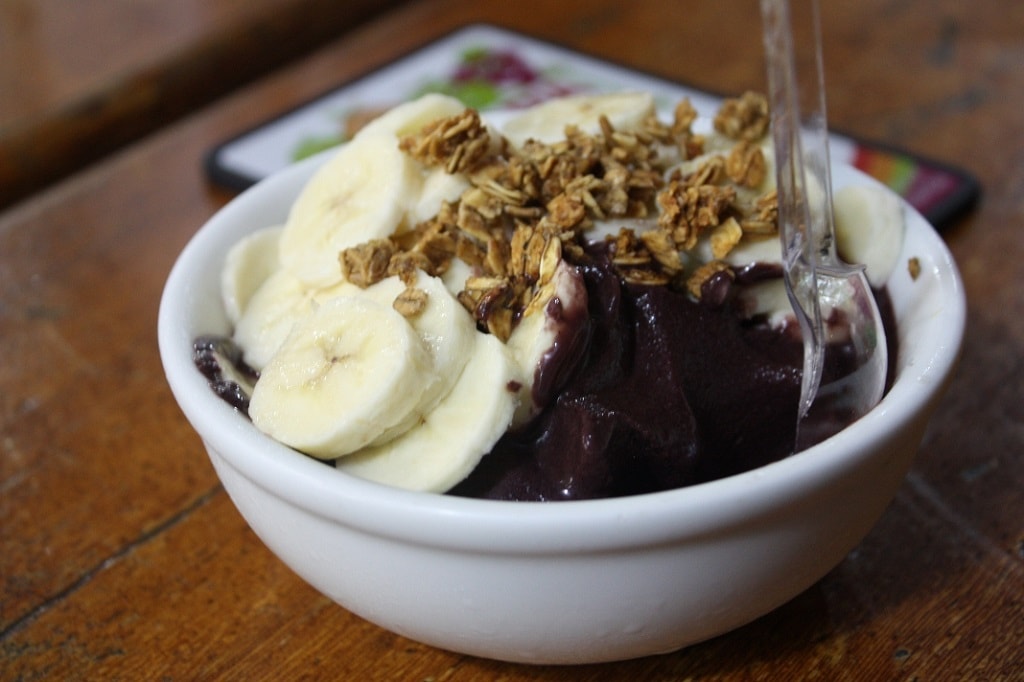
Açaí (it pronounces a-ssa-ee) is the name of a palm tree and its purple fruit, as well as Guaraná, very common in northern Brazil, near the Amazon rainforest. Despite the distant geographical origin, in Rio de Janeiro, açaí is eaten in every corner. Pure, the fruit has an earthy taste. Therefore, in its most common form, the fruit pulp is beaten with guaraná and banana syrup, resulting in a real energy (and sweet) bomb. The mixture is quite creamy, like ice cream. And because it is icy, it is ideal for replenishing the heat of Rio de Janeiro, after and during a day at the beach or hiking.
Where to drink?
You will find Açaí in snack bars and juice houses, in various corners of the city. Some recommended addresses are:
Casa do Açaí (Açaí House) – 143 Siqueira Campos Street – Loja 11 – Copacabana
Amazônia Soul (Amazon Soul) – 37 Teixeira de Melo Street, corner with Prudente de Morais – Ipanema
Freddy Rei Do Açaí (Freddy King Of Açaí) – Street Vendor. Unit 1: Ihangá 400 Street Unit 2: Post 11 Leblon Unit 3: Pepê Beach
Bibi Sucos – Several stores, check out the one closest to you here.
4. Brazilian fruit juices, vitamins, and drinks
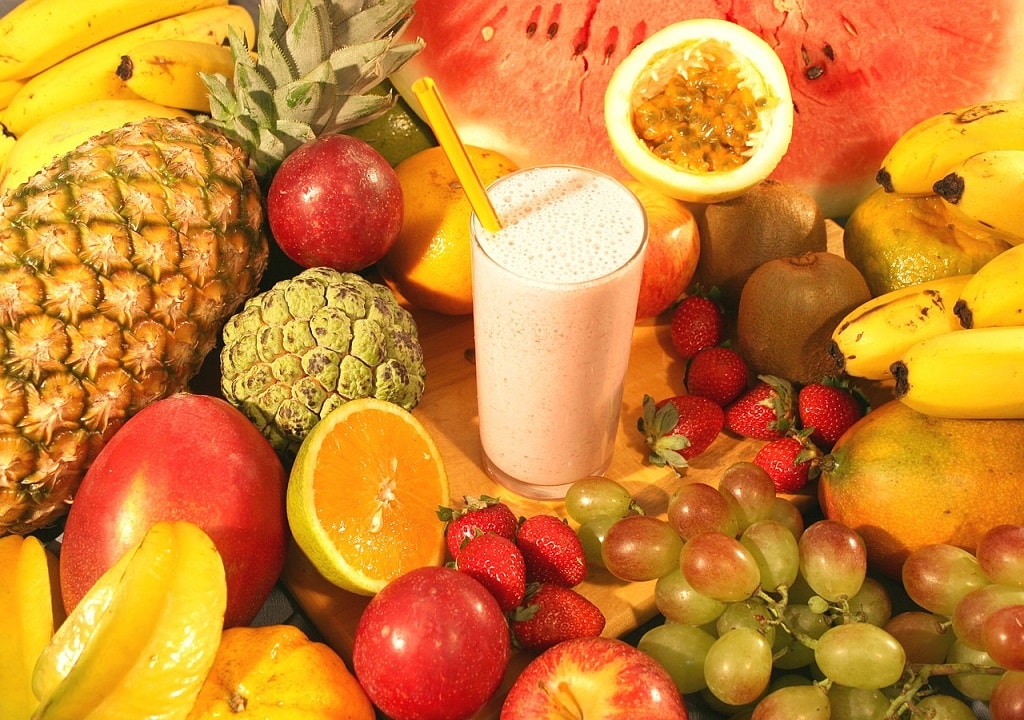
Besides açaí and guaraná, Brazil has many other tropical fruits that in the snack bars of Rio de Janeiro become wonderful juices, vitamins, and drinks that are worth trying. The most common native fruits are pineapple, guava and passion fruit, cashew, cupuaçu, cajá, jabuticaba, and acerola. Use your creativity and ask to mix them with ice, milk, guaraná, cachaça, and/or even banana, which is not Brazilian in origin but has turned into a national passion. If the options are many and you get lost, don’t worry! Most establishments have a list of suggestions for mixtures that are popular.
Where to drink?
Juice and vitamin snack bars made with fresh fruits can also be found on many corners of the city. But some recommended addresses are:
BB Lanches/Leblon – Rua Aristides Espínola, 64, Leblon. Opening hours: Monday to Sunday from 9 am to 3 am.
Polis Sucos/Ipanema – Rua Maria Quitéria, 70 – loja A – Ipanema. Opening hours: Monday to Wednesday from 7 am to 0 am / Thursday to Sunday from 7 am to 2 am.
Bibi Sucos – Several stores, check out the one closest to you here.

Carioca Tip:
The traditional caipirinha is made with lemon. But it can also be made with various other fruits. Try one with your favorite fruit or order the refreshing and even the Brazilian versions of passion fruit and mint pineapple. To try caipirinhas with the most exotic fruits from the north and northeast of the country, the best place is the restaurant Estação Baião de Dois at two addresses: 1. In Tijuca, R. dos Artistas, 21 – Maracanã. From Tuesday to Sunday, from 11h to 02h. 2. At Feira de São Cristóvão, one of Rio’s Intangible Cultural Heritage places. From Tuesday to Thursday, from 9am to 5pm. Friday and Saturday from 9am to 1am and Sunday until 9pm.
5. Mate Leão iced tea and Lemonade (+ Globo biscuit)
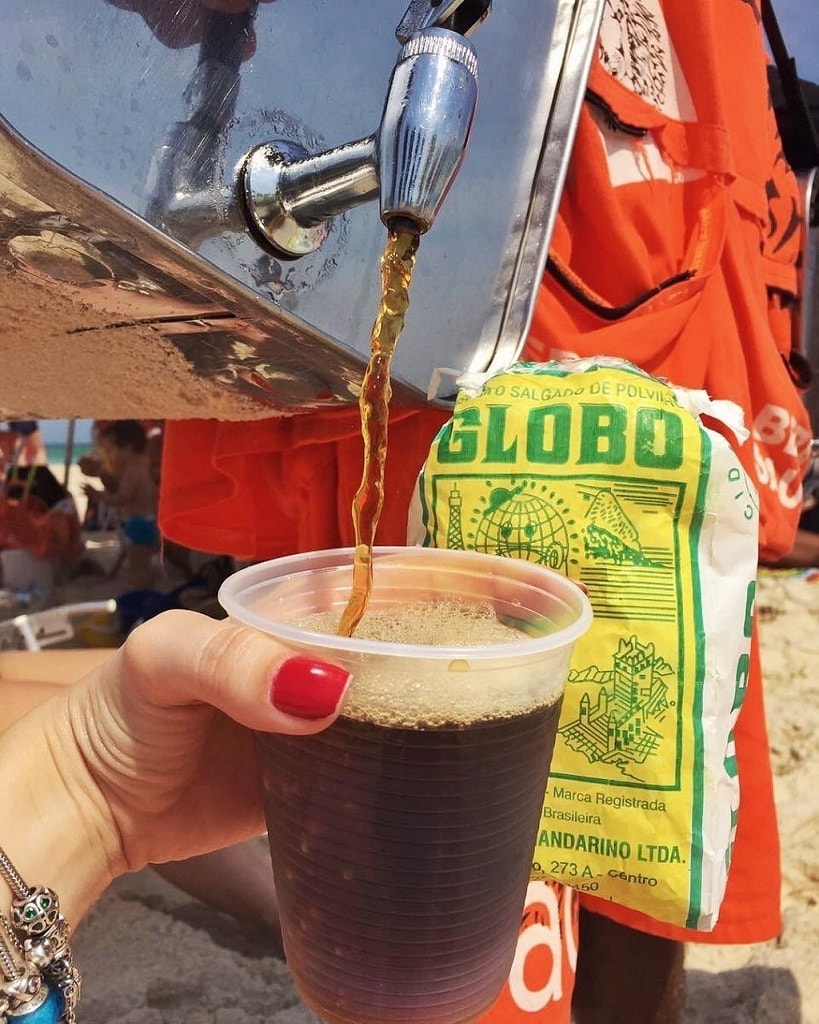
Originally, Mate Leão is a brand of yerba mate tea created in southern Brazil in 1901 and purchased by The Coca-Cola Company in 2007. Yerba mate is a tree originating in the subtropical region of South America that grows in greater quantity and better quality also in the southern area of the country.
For Cariocas, however, Mate Leão is much more than that! After all, together with the Globo biscuit (a manioc starch biscuit) and Lemonade, it is the best snack to enjoy at the beach.
Indeed, the habit of drinking tea is no news to anyone. But in this case, the difference is not in “what to drink,” but “how to drink.” Because, after all, Cariocas have changed the tradition a little. And in the heat of Rio de Janeiro in the 1950s, they began to drink iced, rather than hot, mate tea during relaxed beach moments and during football matches at Maracanã. Therefore, the drink, which was initially “unsuitable for the weather,” became popular and gained new application.
Where (and how) to drink?
Mate (with or without Lemonade) together with Biscoito Globo is always seen on the sands of Rio. Either in the hands of sunbathers or in the hands of the friendly vendors who were recognized as Rio de Janeiro’s Intangible Cultural Heritage. The duo is worth a try when you are enjoying one of Rio’s top 10 beaches. The Mate Leão brand can be found in many restaurants and supermarket shelves. The products are good, but what we suggest here is the experience of drinking mate on the beach rather than the branded products themselves.
6. Sugarcane juice (+ Pastel)
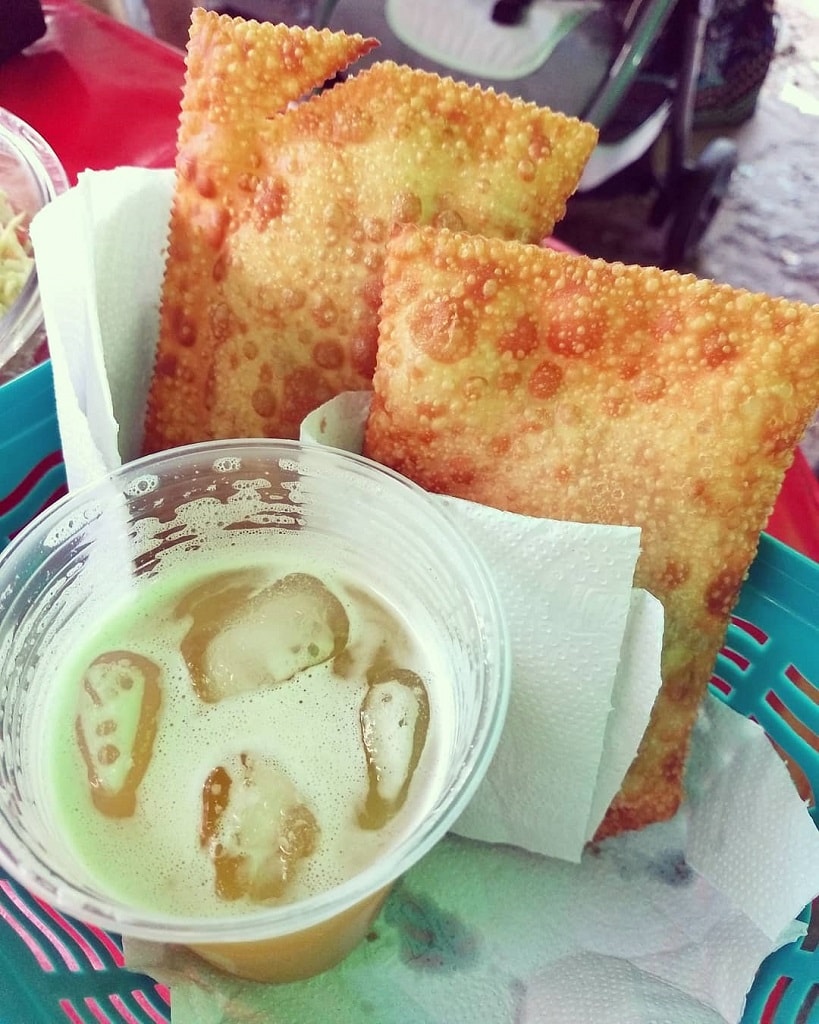
In addition to cachaça, there is another drink made from sugar cane that Cariocas love: sugar cane juice. We especially like the ones we can buy in a street market stall, accompanied by pastel (an oriental origin pastry, deep-fried and filled with various typically Brazilian ingredients).
Sugarcane juice is made with the liquid extracted from sugarcane in the milling process. As explained, although sugarcane is native to the tropical regions of South Asia and Melanesia, it has been widely cultivated in Brazil since colonial times. Therefore, its sweet and yellow broth turned into a typical Brazilian drink as well.
Where to drink?
There are many snack bars in the city that sells the combination pastel with sugarcane juice (notably those belonging to Chinese and Japanese). But the Cariocas really like to taste the duo in local farm markets that take place in different streets of the city weekly. Some popular addresses are:
* Praça Nossa Senhora da Paz, Ipanema. On Fridays from 7am to 1pm.
* Praça Gal. Osório, Ipanema. On Tuesdays, from 7am to 1pm.
* Praça Nossa Senhora Auxiliadora, Leblon. On Thursdays, from 7am to 1pm.
* Av. Lineu de Paula Machado, Lagoa. On Sundays, from 7am to 1pm.
* Praça Serzedelo Correia, Copacabana. On Sundays, from 7am to 1pm.
* Praça São Perpétuo, Barra da Tijuca. On Sundays, from 7am to 1pm.
Phil Rosenthal visited the fair at Praça Nossa Senhora da Paz and ate Pastel with Sugarcane Juice in the first episode of the fourth season of Somebody feed Phil. Check out his full gastronomic tour here.
7. Beer
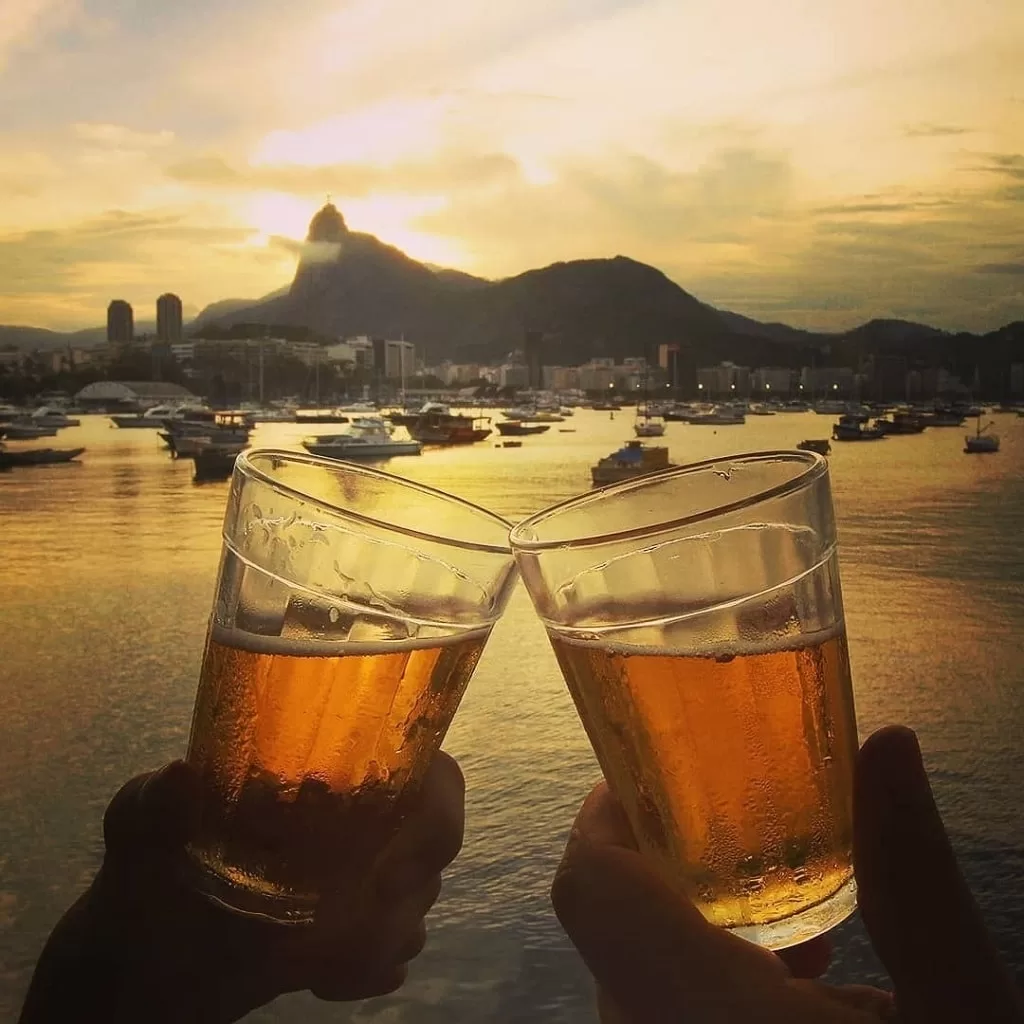
The millennial beer is far from being a Brazilian invention. But it fell in the taste of Brazilians and Cariocas and today is the most consumed drink in the country. To match the weather and the taste of Brazilians, the beer here is lighter (mostly in Pilsen style) and should be consumed very cold (like really really cold!).
Among the Brazilian brands that Cariocas like best are Brahma, Antarctica, Original, and Bohemia. In recent years, the production of craft beer has grown considerably. So, if you like more intense flavors and aromas, it may be worth paying a little more to try the labels that have been crafted by young brewing masters from different regions of the country.
Any Carioca would agree with me: to watch a soccer game, enjoy a samba circle or a late afternoon with friends, beer is always the best choice! That’s why it’s one of the drinks you need to include in your Rio de Janeiro itinerary.
Where to drink?
You will find the traditional national beers in almost all restaurants and bars in the city. But there is one place that can be considered the favorite of Cariocas to drink beer: in Mureta da Urca. Learn more about this genuinely local tradition in our post: 10 Must-See Attractions in Rio de Janeiro.
To try craft beers:
* Noi Leblon – Rua Conde Bernadotte, 26, Leblon.
• Hocus Pocus DNA – Rua Dezenove de Fevereiro, 186, Botafogo.
• Três Cariocas – 3C Tap House – Rua Voluntários da Pátria, 31A, Botafogo.
* Booze Bar – Av. Mem de Sá, 63, Lapa.
* Pub Escondido – Rua Aires Saldanha 98 A, Copacabana.
We hope you enjoyed these tips on what to drink in Rio de Janeiro. They complement the tips found in the post 7 foods you should try in Rio de Janeiro.
Don`t miss our next publications, subscribe to our newsletter for free. And if you need help with planning your trip to Rio de Janeiro, don’t forget that we can tailor a custom itinerary for you.
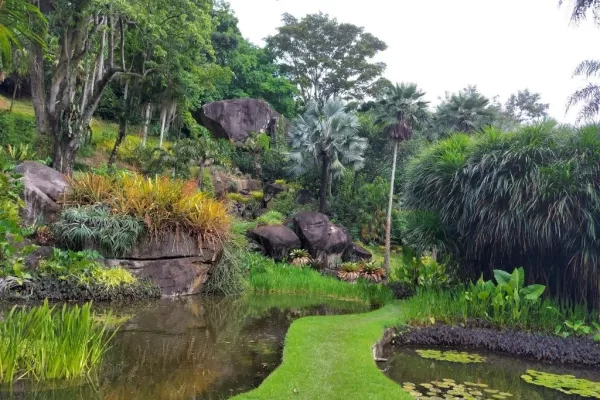


Pingback: Rio de Janeiro for Seniors | Rio de Janeiro by Cariocas